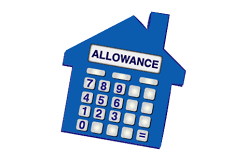
It is crystal clear that in the capital allowances arena, there is a new government in town. Unlike the initial government that encouraged expenditure through capital allowances, the new authorities opted for a more direct approach aimed at lowering the corporation tax rate by cutting down capital allowances. This only means one thing; unincorporated institutions stand on the losing end. Doesn't it then make perfect sense to incorporate? Well, let's look at the differences; what is out with the old and in with the new.
Building Allowances
Following the changes in April 2008, two building allowances have been gradually discontinued- industrial and agricultural buildings allowances both of 4%. They will no longer be in use effective 31st of March 2011 and 5th of April the same year, for companies and unincorporated entities respectively.
Enhanced Capital Allowances
Eco-friendly plants and machinery that utilize water and energy conservation systems or low emissions will benefit from this 100% allowance.
Long Life Assets
Assets with a longevity of over two and a half decades will enjoy a 10% capital allowance beginning on the 6th of April 2008 (1st of April 2008 for unincorporated entities) and lower to 8% from April 2012. For the writing down allowance, if need be, a hybrid tariff will suffice for the transitional timeframe.
Business Premises
The 100% business premises deduction for refurbishing commercial buildings that have not been operational for one year in a specified postcode, unfortunately, will be phased out as from April 2012.
At hand now is a 100% qualifying flat allowance for transforming of private dwelling space above commercial property into rental flats. There's a couple of conditions with regards to size and type of building to make it eligible for the allowance.
Annual Investment Allowance ( AIA)
Annual Investment allowance was first enacted in Finance Act 2008 providing 100% allowance on capital expenditure for small and mid-sized units up to a given maximum figure. In the beginning, it was the first £50,000 of qualifying expenditure on plant and machinery that was deductible. Later in April 2010 it doubled to £100,000 and then again lowered after two years to £25,000. AIA will be time apportioned appropriately should the basis period straddle 1st April for companies and 6th April for its unincorporated counterparts. On the other hand, if the chargeable period straddles, then the amount of time before and after the relevant date that is chargeable is taken into consideration. Nonetheless, the maximum is calculated ignoring the increase in AIA for expenditure incurred before the relevant date.
First Year Allowance (FYA)
Annual investment allowance took over from First Year allowance in April 2008. Nevertheless, Finance Act reintroduced a short-term FYA of 40% on qualifying plant and machinery expenses. This applied to the period between 1st of April 2009 to the 31st of March the following year for companies. For unincorporated units, the allowance covered the period between 6th of April 2009 to 5th of April the next year. Unlike the preceding FYA, this provisional one did not have a bias towards a particular business size.
Integral Features
Integral features allowance is lowered by 2% from the initial 10% as per the special rates allowance and now stands at 8%. Water and space heating and cooling systems, lifts, escalators and moving walkways, electric and lighting systems and external solar shading all form the integral features. This excludes fixed structures to enclose the interiors such as walls.
Business Motor Vehicles
In a bid to foster environmental conservation, the government has boosted the use of eco-friendly cars by increasing capital allowances on cars with low carbon dioxide emissions. Earlier on before 1 April 2009 for companies and 6 April 2009 for unincorporated entities, cars valued at £12,000 and lower went to the general pool. Those higher than that value went into the special pool and had an allowance of £3000 every year. Beginning April 2009, the Finance Act 2009 brought in a new set of rules. The carbon dioxide emitted by a car will determine the rate of capital allowance it gets. An automobile emitting 110g/km or less is entitled to 100% capital allowance in the first year. Cars emitting between 111g/km and 160g/km fall in the general pool allowance category whose rate is 18% from April 2012. Large emission cars of 161g/km and over fall in the special pool rate of 8% beginning April 2012. The initial £3000 restriction still stands for costly cars purchased before 1st April 2008 for corporations and 6th April 2008 for unincorporated entities.
Short Life Assets (SLA)
Business entities can opt to have the expenditure on plant and machinery dealt with as SLA hence allocated to a single asset pool. This enables a balancing adjustment should the SLA be disposed of within a 4-year span. If disposal is not done within the 4 years cut off period, the surplus expenditure shifts to the main pool and writing down allowances proceeds as usual. In the Budget 2011, the cut off period was raised by four more years to eight applying to expenditure incurred on or after 1st April 2011 (corporation tax entities) and 6 April 2022 (income tax entities.)
J.R.'S TAX SERVICE|
|
